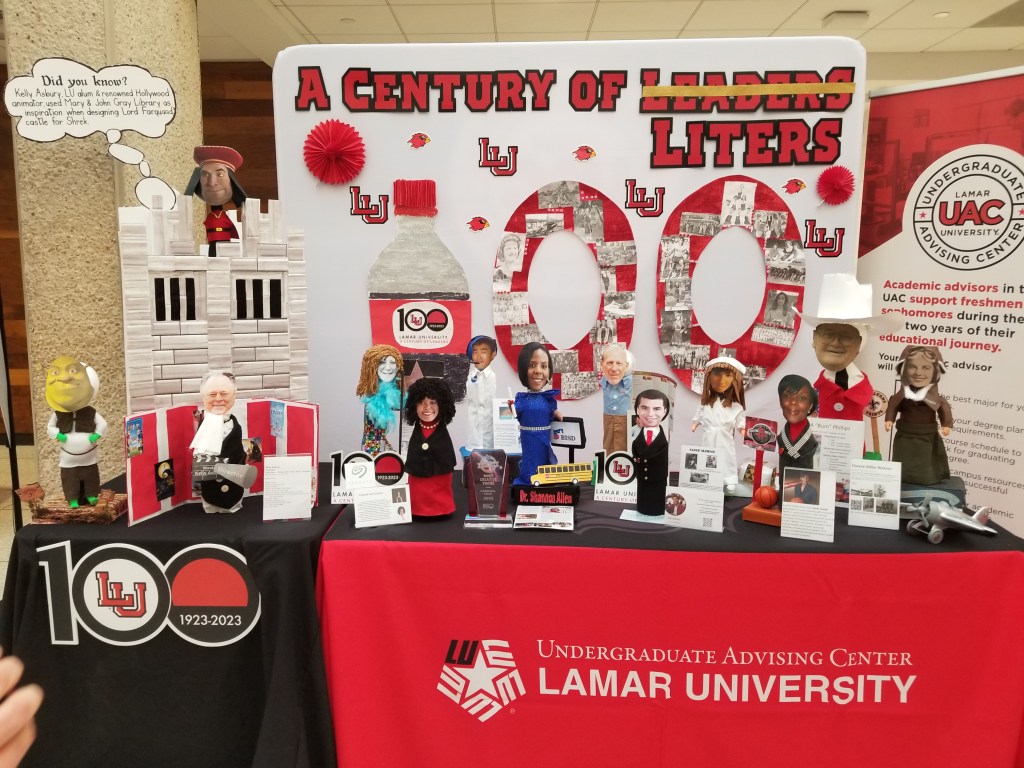Author: The Advisor That Cares
Option 1
eP Tip
Dr. Harapnuik never ceases to amaze me with his natural ability to mentor and influence. In our final class call last night, he covered something so helpful to me that I want to blog about it here, hoping to leave breadcrumbs for you (and my future self, too).
My first assignment had Canva/embedded issues when Dr. Harapnuik viewed my WordPress page in Firefox. I tested the embedding with incognito mode and two browsers without issue, but the screencast feed-forward did not lie. I turned that Canva presentation into a painfully silent and awkward YouTube video just to correct the issue. I will need to re-visit that for a solution that fits my creative intentions a little better or at least add some background music.
For my second assignment, I took this into consideration. While embedding the Canva I created (feeling oh so proud of it, too), I included a prominent title link to the Canva creation itself. While viewing my feed-forward video, I was devastated to see that the Canva image did not show at all, and while Dr. H was following links to linked projects, I noticed the same glaring issue on my Advising 101 course page.
But here’s where the ah-ha moment kicked in for me. Dr. Harapnuik explained that while media tools like these are lovely, as portfolio curators, we should be mindful of our users’ experience. People are busy.
For example, Dr. Harapnuik explained he typically has 20-30 tabs open in his browser window. If our portfolio takes the user to Canva and then the links from Canva each spawn a new browser tab, the user will likely get frustrated and navigate to a different site.
Now, this is something I can relate to!! I typically do this across 5-6 browser windows, too (my poor computer might be looking forward to my graduation more than anything). Don’t even get my husband started on how many I have open at any given time on my cell phone, too. We all have our systems, and I’m considering what Dr. H has mentioned several times (EverNote).
I was finally able to see Dr. H’s point, and with a few tweaks and changes, I now have a presentation that allows the dynamic image I created to be viewed while the links I embedded in it open in the same browser window.
Before/After


Swipe right and left for the before/after.
- Please note that the Canva instance has multiple tabs, which is not even all of the available linked content.
- The alternative has one browser without breaking the users’ ability to use the back button.
- There is no forced Canva, no opening of multiple tabs, and no frustrated viewer moving on and missing your message. I like to add these as linked options in case someone prefers the alternative viewing option.
New skills I’ve picked up in this final course thus far:
- I’ve learned how to insert spacers in my pages/posts.
Modifications I’ve made to my portfolio in this final course thus far:
- I’ve changed themes so that I can modify text size/font
- I am still experiencing some limitations in background color options/contrast, but this is a good step in the right direction.
- The editing lift is heavy. Adjusting header sizes, color contrasts, and converting all of my embedded Canva content into PDF or alternative formats is turning my synthesis into a perfectionist’s nightmare.
Update as of 11/27/2023
In the final class call of the ADL Program, Dr. Harapnuik acknowledged the challenge we all have in our final synthesis assignment. He recognizes that by now, we have several posts and pages, with many of us having hundreds of each.
This got me curious, so I went to check my WordPress, and here are the stats:
- Posts = 197 (well, 198 with this one)
- Draft posts = 17drafts
- Pages = 108
- Draft pages = 8
Update to the update on 11/28/2023
After last night’s amazement seeing the number of posts and pages I’ve created thus far, while downloading a previously created project to potentially incorporate into my final page I received this silly little notification:

View on Canva
I’m just playing around with these numbers, but looking back on all the work we have put into our learning journey is awe-inspiring.
Final Focus

I have at least five ongoing projects for my final synthesis. This morning, while reviewing my thoughts, reflections, and content ideas, I realized I needed to shift my focus slightly.
I realize Dr. Harapnuik knows exactly what projects he’s had us complete throughout the program. He’s the program designer. So, itemizing each course focus, and the major projects completed during each is an excellent summary of my experience. Still, for the actual learning showcase, I should tell my best friend, my mom, or someone who wasn’t a part of this journey about all the neat things I did and built.
I keep running down rabbit trails in different directions. Should I consolidate? Should I distinguish them from one another more clearly? So much content to cover!
- Option 1: This talks about me and my personal journey into my graduate degree program. Where I was professionally. The presentation then goes into each course, learning outcomes, major projects, and examples of completed work for each.
- Option 2: Introduces the innovation idea and frustrations experienced by advisors and learners. It then explains my non-accelerated path to program completion and my ever-changing collaboration group.
- Option 3: This is the most concise and cohesive representation of the ADL program and projects built.
- Option 4: Currently has the least content but aesthetically aligns with portfolio (in its current state) – potential to combine and consolidate from others
- Option 5: Simple infographic of the 10 courses of the ADL Program – brief summary of each needed or deleted
- Option 6: The projects page – I have been working through course summaries and personal reflections course-by-course.
Tag You’re It!

Throughout the ADL program, I utilized blog tags organized by course number to facilitate program reflection and to document my learning journey.
These course numbers correspond with the program map and my project’s page.
#5302 (11) #5303 (21) #5304 (19) #5305 (8) #5313 (28) #5315 (18) #5317 (13) #5318 (16) #5320 (28) #5389 (14) Advising Topics (1) Goals (9) Peace (2)
Crisis Culture

In my experience, higher education tends to be reactive by nature and less proactive. While we do set future goals, the primary focus is still on lag measures. My institution is no exception to this typical human condition. It can feel like we run from one crisis to the next as staff. My innovation proposal is much more proactive.
The invitation to innovate advising flips the script and instead seeks to empower and give ownership to students from their earliest interactions with advisors and the college programs.
Crucial Conversations and The Influencer Model are two key strategies that will continue to guide this work: supporting a culture change and a new approach to learning through advising.
Walking the Talk
Reflecting on the innovation plan update while collaborating with my classmates, I feel like the last two years have been about me preparing, researching, and developing the skills I need to help set the stage for my innovation. Yet, now it was time to start walking the talk.
talk the talk … walk the walk
idiom
You see, throughout the ADL Program, we have been learning and planning as we explore and develop our innovation project. I have talked A LOT about my innovation and the related components. But now, instead of just talking the talk, it was time for me to walk the talk! A slight modification of the idiom.
What does walking the talk look like in my life?
It means vulnerability. It is being raw and authentic. To change the world, it is time to be vulnerable. Vulnerability means sharing my innovation ideas with my team. Instead of the select few fellow advisors, I secretly whisper little tidbits of my innovation plans to see if they will be receptive to the idea. I have a few former colleagues and one current one who have seen pieces of my innovation plan. I do not know if they embraced a learner mindset and explored my resources, but this next step in being authentic and walking the team means sharing it boldly with others.
New role: It has been harder to share with others in my new leadership role.
As an advisor, I was just sharing an easier way to do things instead of potentially being “the know-it-all boss” who comes in to tell others how to do things. I want advisors to know that these innovation ideas are completely personally curated by them. Each advisor has choice, ownership, and voice in what they create to share with their learners. I want them to create a resource that supports their objectives and fulfills their purpose. I want to ask each one, “What do you want to make it?” I sincerely invite you to take my innovation idea and run with it. Let’s improve it. My innovation idea is all about collaborating, sharing, and giving one another feed-forward to continue improving our ideas and how we can reach our students.
Crucial Conversations are essential.
Nothing can work until people learn to talk to one another. While acknowledging that change is hard, isn’t life just a long series of trial-and-error opportunities? How do we know how best to fulfill our roles if we don’t evolve and continue to try new things? In order to do so, I have to help create a culture of safety that facilitates relationships to allow communication and innovation to flow among team members. This investment provides the foundation for fruitful collaboration as the team grows to trust one another. I must be observant and aware when the team is engaged in dialogue and when it is not. Committing to actively engage when dialogue stops cultivates accountability and changes the team dynamic so we can explore difficult ideas together. As we move forward together, we will influence each other to develop the most effective advising resource to serve a variety of learners.
What have you done so far?
I have created a personally curated resource of advising information.
Reflecting on how far I have progressed toward implementing my innovation, I feel very proud of all the work I have completed. The advising.blog, ePortfolio has become such a useful part of both my personal learning and my professional development.
I have created a professional learning plan.
My professional learning plan is for advisors to create a professional portfolio. Giving advisors choice, ownership, and voice (COVA) in their creative process, I aim to show them what a valuable opportunity they have to create a significant learning environment (CSLE) for their learners. Building collaboration into my professional learning strategy, I seek to fortify relationships among the advising teams. Piloting professional learning in phases allows for input, modification, and improvements. Teambuilding through professional learning is just another example of how I am being intentional about facilitating a caring culture. Sharing the why, what, and how helps to guide the advising innovation. This professional learning opportunity seeks to connect advisors with their passion and valuable purpose.
I have assessed my innovation through action research.
As I evaluated my innovation plan and its purpose, the theme of learner agency was common. Ultimately, my innovation seeks to flip the advising interaction, so my action research strategy evaluates in what ways a flipped advising module on degree planning facilitates student agency in making curricular choices during the first year of college? The four-stage action research process invites the advising team to critically evaluate their practice through data analysis.
I have built a pilot Advising 101 course.
The instructional design online learning course guided me through creating my innovation within a learning management system (LMS). In my efforts to create a significant learning environment, I was able to apply the skills I learned through the CSLE course. The process of creating the Advising 101 course was also my first big reveal of the innovation idea to other advisors within my advising unit. By asking advisors to participate in the usability testing of this early prototype of an advising course design. Sharing with advisors at my organization provided me with valuable insights and information on the overall innovation plan.
I have prepared to share my innovation.
I plan to share my innovation ideas through an open invitation to advisors everywhere through publication within my professional organizations and learning networks. The multiple literature reviews and the publication process revealed a need for further discussion, collaboration, and exploration of how technology (digital learning) can be leveraged to humanize relationships.
I have pivoted the one advisor against the world (early innovation idea) toward much larger-scale innovation strategies. Many of which I never dreamed possible, yet here I am proposing them. As stated in my final reflections on creating significant learning environments,
“I now understand the bigger picture project and goal. In addition to making sure learners have a positive advising experience, we can help create a strong learning foundation that learners carry with them into their academic subjects and beyond to their lives and futures. The task that was already humbling enough is now even more so. We owe it to our learners to put in the hard work it takes to create significant learning environments”
The Advisor That Cares, Creating a Significant Learning Environment
I have grown and evolved.
Reflecting on my Learning Manifesto, I can see that my heart is aligned with my purpose. These early thoughts and plans reflect every step I’ve taken toward this innovation. Thanks to the ADL Program, I am equipped with a growth mindset plan, and I continually revise and evolve that excitement about learning new things toward my learners’ mindset. Having researched my learning philosophy really helped me in this personal evolution. As I evaluated what I believed about learning, I released myself from limiting beliefs and a fixed mindset.
We WON!
Talk about positive reinforcement for being raw, authentic, and true to yourself!
I had to be brave enough to share my silly preview day theme idea. Thankfully, my department all got into it, and we put together a beautiful display of our collaborative effort. I think everyone in the office contributed something in some way, which is just such a beautiful thing to me!


